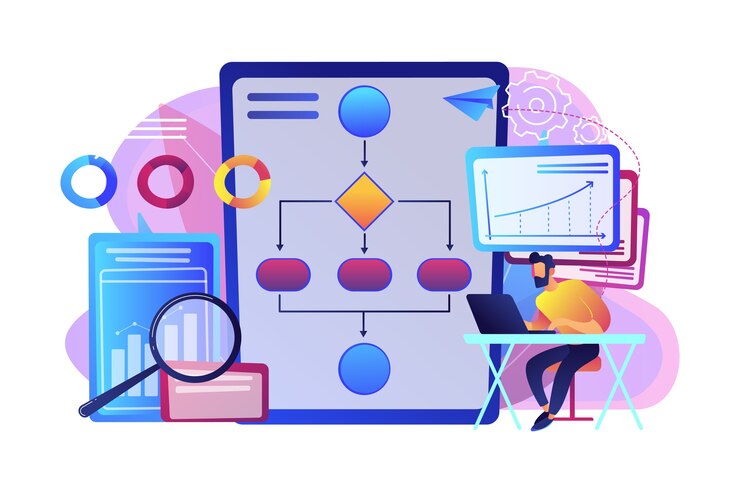Cloud-Based Digital Payment Systems: The Future of Payments
In today’s rapidly evolving digital landscape, businesses and consumers alike demand faster, more secure, and more convenient payment methods. Cloud-based digital payment systems have emerged as a solution that meets these demands and promises to revolutionize the payment industry.
With the ability to process transactions in real-time, store payment information securely, and offer flexibility to businesses of all sizes, cloud-based payment systems are quickly becoming the go-to payment option for many.
In this article, we will explore the benefits of cloud-based digital payment systems, compare them with traditional payment systems, address security concerns, and discuss how they are shaping the future of payments. So, buckle up and get ready to discover why cloud-based digital payment systems are the future of payments.
What are cloud-based digital payment systems?
Cloud technology in digital payments is becoming increasingly popular as businesses and consumers seek fast, secure, and convenient payment methods. These systems allow payments to be processed and managed entirely in the cloud, without the need for physical payment terminals or on-premises software.
In this section, we’ll take a closer look at what cloud-based digital payment systems are and how they work.
Definition
Cloud-based digital payment systems are a type of payment processing service that enables merchants to accept electronic payments online and in-store.
Cloud infrastructure
Cloud-based payment systems operate on cloud infrastructure, which means that all payment data is stored on remote servers and can be accessed from anywhere with an internet connection.
Processing payments
Cloud-based payment systems process payments in real-time, allowing merchants to receive funds quickly and efficiently.
Payment types
These payment systems support a variety of payment types, including credit cards, debit cards, e-wallets, and mobile payments.
Integration with POS
Cloud-based payment systems can be integrated with point-of-sale (POS) systems, allowing merchants to manage all their sales and payments in one place.
Subscription-based
Many cloud-based payment systems are subscription-based, which means that merchants pay a monthly fee for access to the service.
Benefits
Cloud-based digital payment systems offer a range of benefits, including faster processing times, increased security, and lower transaction fees compared to traditional payment methods.
Cloud-based payment systems vs. traditional payment systems
When it comes to accepting payments, businesses have traditionally relied on physical payment terminals and on-premises software. However, with the emergence of cloud-based digital payment systems, the payment landscape is rapidly evolving.
In this section, we’ll compare cloud-based payment systems with traditional payment systems and examine the advantages of cloud-based payment solutions.
Infrastructure
Traditional payment systems require businesses to install hardware and software on-premises, which can be costly and time-consuming. In contrast, cloud-based payment systems operate entirely in the cloud, requiring no physical infrastructure.
Cost
Traditional payment systems often require significant upfront costs, including hardware, software, and installation fees. Cloud-based payment systems, on the other hand, typically charge a subscription fee, which can be more affordable for businesses.
Processing times
Traditional payment systems can be slow, with transactions taking several days to process. Cloud-based payment systems, in contrast, process payments in real-time, allowing businesses to receive funds quickly.
Security
Traditional payment systems can be vulnerable to security breaches, as payment data is stored on local servers. Cloud-based payment systems offer increased security, as payment data is stored remotely on secure servers.
Integration
Traditional payment systems can be difficult to integrate with other business software, such as accounting or inventory management systems. Cloud-based payment systems, in contrast, can be easily integrated with other cloud-based software.
Flexibility
Cloud-based payment systems offer businesses greater flexibility, as they can be accessed from anywhere with an internet connection. Traditional payment systems, in contrast, are limited to on-premises use.
Security concerns with cloud-based payment systems
While cloud-based payment systems offer numerous benefits, security concerns are a top priority for businesses and consumers alike. Payment data breaches can result in significant financial losses, damage to brand reputation, and loss of consumer trust.
In this section, we’ll examine some of the security concerns associated with cloud-based payment systems and explore how these systems address these concerns.
Data encryption
Cloud-based payment systems use encryption technology to protect sensitive payment data. This ensures that data transmitted between the customer and the payment system is secure and cannot be intercepted by hackers.
Compliance
Cloud-based payment systems must comply with industry standards, such as the Payment Card Industry Data Security Standard (PCI DSS), which establishes requirements for secure handling of payment data. Compliance with these standards is essential for ensuring the security of payment data.
Access controls
Cloud-based payment systems provide access controls, which ensure that only authorized individuals can access payment data. This includes restricting access to payment data on a need-to-know basis and implementing two-factor authentication.
Monitoring and detection
Cloud-based payment systems use monitoring and detection systems to identify and respond to security threats. These systems can detect suspicious activity, such as unusual login attempts or unusual transaction patterns, and take action to mitigate the threat.
Disaster recovery
Cloud-based payment systems have disaster recovery plans in place to ensure that payment data remains secure in the event of a system failure or outage. This includes regularly backing up data and implementing failover systems to ensure that payment processing can continue uninterrupted.
The future of payments with cloud-based digital payment systems
The rise of cloud-based digital payment systems is transforming the payment landscape, offering businesses and consumers faster, more affordable, and more secure payment options.
In this section, we’ll explore how cloud-based payment systems are shaping the future of payments and what we can expect in the years ahead.
Increased adoption
As cloud-based payment systems continue to gain momentum, we can expect to see increased adoption across industries and around the globe. This will make it easier and more convenient for consumers to make payments and for businesses to accept them.
Innovation
Cloud-based payment systems are driving innovation in the payment industry, with new features and capabilities being added regularly. This includes advancements in mobile payments, better digital wallet app developments, as well as peer-to-peer payments.
Seamless integration
As cloud-based payment systems become more sophisticated, we can expect to see seamless integration with other business software and applications. This will streamline payment processing and make it easier for businesses to manage their finances.
Enhanced security
Cloud-based payment systems will continue to enhance their security measures, providing even greater protection against data breaches and fraud. This will help build consumer trust and confidence in digital payment systems.
Increased use of AI and machine learning
With the rise of AI and machine learning, we can expect to see these technologies being integrated into cloud-based payment systems. This will enable more sophisticated fraud detection and prevention, as well as personalized payment experiences for consumers.
Conclusion
In conclusion, cloud-based digital payment systems are changing the way we think about payments. They offer numerous benefits, including faster processing times, lower costs, and enhanced security. While security concerns remain a top priority, cloud-based payment systems continue to improve their measures to protect sensitive payment data.
Looking to the future, we can expect to see increased adoption, innovation, seamless integration, enhanced security, and the use of AI and machine learning in cloud-based payment systems. As the payment industry continues to evolve, businesses and consumers can look forward to a future of faster, more convenient, and more secure payments.
 English
English 




























































































































































